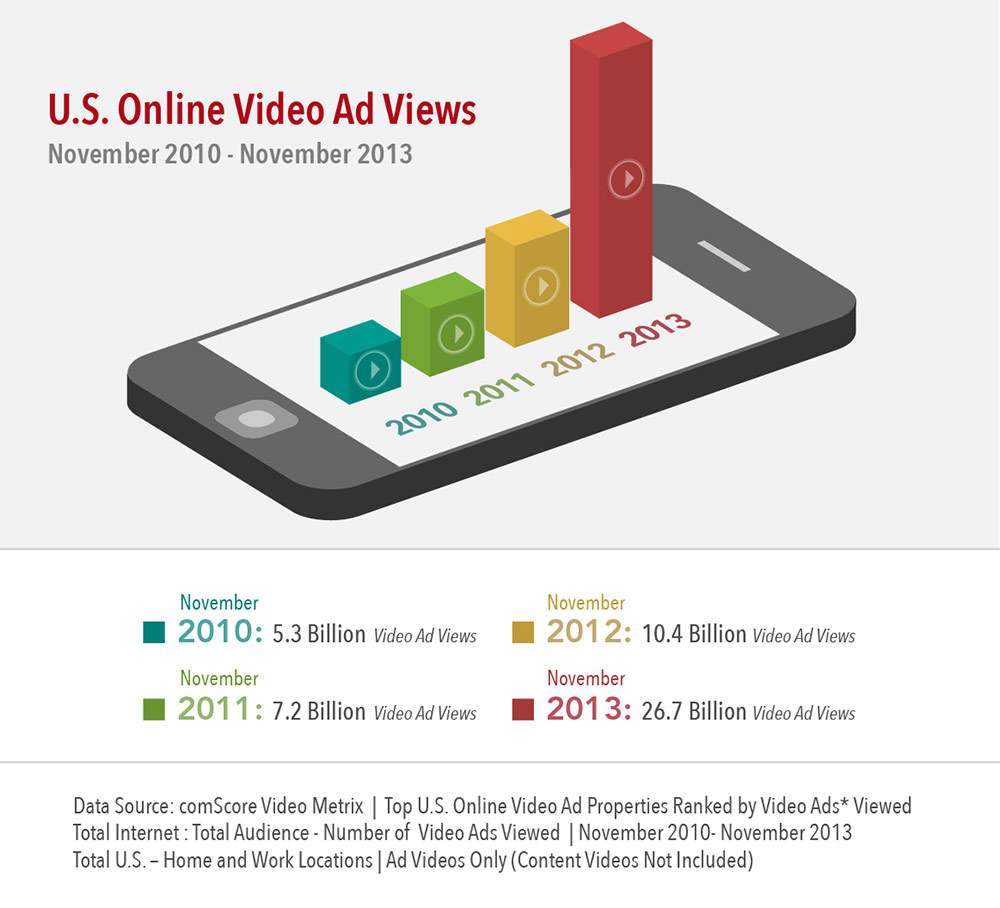With the rise of laptops, tablets, and smartphones, we can now watch content, especially videos, anytime and anywhere. Video content has become a major player on the Web. In November last year, comScore reported that 87.1 percent of all Internet users in the U.S. watched an online video. It’s no surprise that many of these views happened on YouTube, known for its vast selection of videos and over one billion unique monthly visitors. Whether it’s your favorite sitcom or movie, news coverage from a source you trust, or a hobbyist showcasing their latest project on YouTube or Vimeo, online video is a powerful tool for marketers to reach and engage with customers.
There are three types of video ads for advertisers to consider.
- In-stream video ad – Most are familiar with the pre-roll, where the ad runs before the video content in the same video player. There are also mid-roll and post-roll video ads, which run just like they sound, during and after the video.
- In-banner video ads – These ads feature video content inside a standard banner ad unit. You’ll often hear in-banner video ads referred to as a rich media treatment.
- Branded video content – These videos blur the lines between advertising and entertainment, seeking to both entertain and move viewers to action.
As video ad spending grows (it’s projected to reach nearly $6 billion this year in the U.S.), its role in the overall digital space is more limited. A Forbes article pointed out that the top 100 advertising brands spent an average of just 1.5 percent of their media budgets on online video last year.
Advertisers have shown a willingness to invest in video advertising, perhaps because of its measurable qualities. As we all know, the digital age affords marketers the chance to target, monitor, analyze and optimize more than ever before. Common metrics to measure digital video advertising include:
- View rate
- Completion rate
- Click-thru rate
- Engagement rate
- Impressions
Other things to consider when evaluating online video advertising may include:
- Site running the ad
- Device serving the ad
- Time of day the ad is being served
- Video’s length
- Video’s value proposition
- Video’s production value
- Volume of ads on the site
A study by the Jun Group, “The State of Opt-In Video and Consumer Engagement,”indicated that video ads 30 to 60 seconds in length generated the highest engagement rate at 4.5 percent. The lowest? Sixteen to 30 seconds garnering an engagement rate 38 percent lower at 2.79 percent.
At the end of the day, video advertising deserves its place in an advertisers’ digital repertoires. Even though it’s been around for some time now, digital video helps marketers stand out, giving them the awareness required to achieve their lead- or sales-oriented objectives. And with accessible tools to measure effectiveness, there’s no reason why you shouldn’t be able to optimize your way to the top.
From in-stream to in-banner to branded content, M/C/C is so convinced in this trend, we have invested in an in-house video production suite and video expertise to take our client’s digital strategy to the next level.
Previously published on The M/C/C Minute at www.mccom.com/blog. Tweet us — @mccPR!
